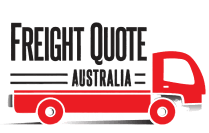
What is the Chain of Responsibility Legislation?
Significant amendments were made to the Chain of Responsibility (CoR) legislation in 2018, particularly in the context of road transport safety. These amendments were introduced under the Heavy Vehicle National Law (HVNL). The law emphasised shared responsibility, requiring all parties to take reasonable steps to prevent safety violations, including ensuring that loads were properly restrained, drivers were not fatigued and vehicles were maintained in a safe condition.
This amendment highlights that every party in the supply chain, whether on or off the road, will be responsible for any safety breaches that occur.
When Did the CoR Take Effect?
Although the Chain of Responsibility concept was first approved in November 2003, it was incorporated into the National Road Transport Reform (Compliance and Enforcement) Act 2003 in 2005. The Heavy Vehicle National Law was then implemented in 2014 to establish a single set of regulations for heavy vehicles. The CoR concept is integrated into this law aswell.
The implementation of CoR obligations marked a significant milestone in enhancing road transport safety and responsibility within the logistics and transportation industries in Australia. With these amendments, the CoR framework shifted towards a more holistic approach, holding all parties involved in the supply chain accountable for safety breaches involving heavy vehicles.
Who Does the CoR Apply to?
Individuals or businesses become parties based on specific functions rather than titles or job descriptions. Being a CoR party makes you accountable for heavy vehicle safety. According to nhvr.gov.au, CoR applies to you if you engage in any of the following ten activities:
- Employing a heavy vehicle driver (employer)
- Engaging someone to drive a heavy vehicle under a contract for services (prime contractor)
- Directing the control and use of a heavy vehicle (operator)
- Scheduling the transport of goods and passengers in a heavy vehicle, or scheduling a driver’s work and rest hours (scheduler)
- Consigning goods for transport by a heavy vehicle (consignor)
- Receiving goods delivered by a heavy vehicle (consignee)
- Packing or assembling goods for transport in a heavy vehicle (packer)
- Managing premises where five or more heavy vehicles are loaded or unloaded each day (loading manager)
- Loading a heavy vehicle (loader)
- Unloading a heavy vehicle (unloader).
It’s important to note that more than half of these CoR functions involve individuals and businesses that do not necessarily own or operate a heavy vehicle.
What Areas Does the CoR Target?
Chain of Responsibility legislation aims to target these four main areas:
-
- Speeding
- Fatigue management
- Mass dimension
- Load restraint.
Primary Duty involves doing everything reasonably possible to ensure the safety of transport-related activities.
Executive officers are tasked with a “Due Diligence” duty to ensure that all parties within the Chain of Responsibility adhere to their legal obligations. The list of parties within the CoR remains unchanged. If you are part of the transportation supply chain, you are required to uphold safety standards and could be held responsible if something goes wrong that you were aware of or were involved in. At times, you may find yourself responsible for multiple duties.
Fatigue – a Silent Killer
Fatigue, often referred to as the “silent killer,” poses a significant risk to road safety particularly in the context of long-haul and interstate transportation. Fatigue occurs when drivers become mentally or physically tired due to extended periods of driving without adequate rest. The nature of truck driving, which often involves long hours on the road and irregular schedules, makes truck drivers particularly susceptible to fatigue.
The term “silent killer” underscores the deadly nature of fatigue-related accidents. Unlike other factors such as speeding or impaired driving, fatigue may not be immediately apparent to other road users or even the drivers themselves. Yet, the consequences of driving while fatigued can be dangerous, leading to impaired judgement and slower reaction times.
Fatigue-related accidents involving trucks are often severe due to the size and weight of these vehicles, and becomes even more serious if they are freighting dangerous goods. A fatigued driver may lose control of the truck, resulting in collisions, injuries and death. Fatigue-related accidents can also occur at any time of the day or night, making them difficult to predict and prevent.
To address the threat of truck fatigue, authorities have implemented laws and regulations aimed at managing driver fatigue and ensuring road safety. These regulations include limits on driving hours, mandatory rest breaks and fatigue management programs.
The National Heavy Vehicle Regulator states that when operating under Standard Hours, you must have a minimum of 12 hours of rest time in a 24-hour period.
These 12 hours of rest must include:
-
- 15 minutes within the first 5 ½ hours
- 30 minutes within the first 8 hours
- 60 minutes within the first 11 hours
- 7 continuous hours of stationary rest time.
Having a quick break every two hours is an effective way to delay the onset of driver fatigue.
The statistics provided by the Australian Automobile Association (AAA) highlight the impact of driver fatigue on road safety in Australia. Around 20% to 30% of vehicle crashes are linked to fatigued drivers. Fatigue impairs judgment, slows reaction times, and increases the likelihood of accidents. This poses a serious risk to other road users.
The Chain of Responsibility obligations provides reassurance to truck drivers and road users by reducing the risk of transport-related accidents in Australia.
